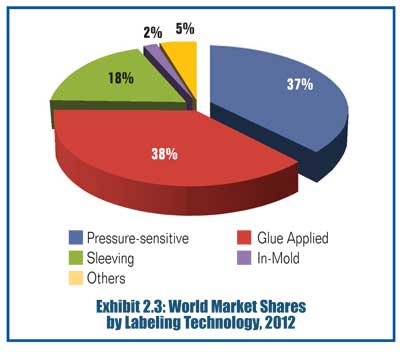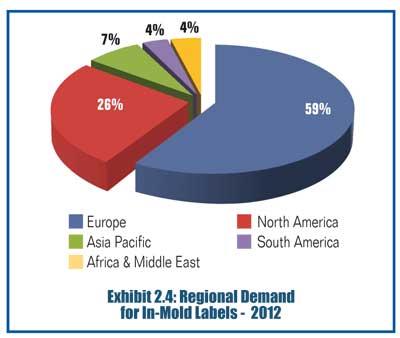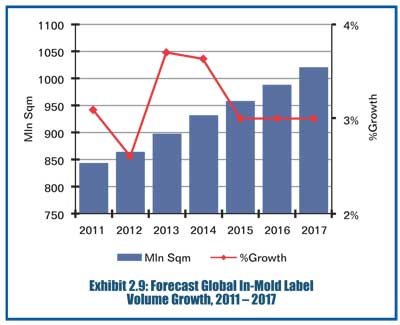In-Mold Label Market Study Assesses Industry
AWA’s Global In-Mold Label Market Study 2013 is the third assessment conducted by Alexander Watson Associates of the current status of one of the world’s developing labeling technologies.
In-mold labels are used in a diverse range of FMCG (Fast-Moving Consumer Goods) and industrial packaging. This report details the market structure, market volumes and trends, materials, technologies and growth forecasts for this niché labeling format.
With reference to in-mold label technologies in 2012 – the period covered by the statistics in this report – trends in the general use of labels showed a consolidation of the market volumes following the uncertainties of 2011. These uncertainties were more evident in the developed economies than in emerging economies and are reflected in actual and forecast levels of GDP growth.
Growth in GDP is a prime indicator of the potential for growth in any given label market. Sovereign debt levels in Europe, coupled with austerity programs in the region’s leading economies, continue to impact GDP growth and this is evident in the relatively low growth of the packaging and labeling markets when compared with other regions. This continuing lack of confidence among European consumers as a result of the macro-economic positions across Europe is reflected in a low actual and forecast rate of growth for all label formats and technologies.
The North American label markets continue to show higher levels of buoyancy than for Europe. But, softening label markets in the final quarter of 2012 and overall growth rates generally in line with GDP are indicative of a mature market with slowing potential.
The historical growth of Asian and South American economies has been a feature of the 21st century. This economic growth has, to a degree, been a driver for high levels of growth in the respective label markets. However, these economies also are impacted by the reduced trade-related effects of the economic and financial turbulence emanating from the developed nations. In certain of these countries, on-going economic growth is supported by more market-orientated structural reforms and a higher focus on private, domestic consumption.
The market shares enjoyed by in-mold labels on global and regional levels are consistent with those of a niché label format. The market for in-mold labels presents a mixed picture with regards to the technologies used and the regional potential for each technology. However, the growth in in-mold labels compares well with that of competitor technologies where growth is lower and, in some cases, where actual volume declines are noted.
Overall, the future prospects for the volume development of in-mold labeling technologies remain mixed. The relative stagnation of IML-EB in North America and Europe, the maturity of IML-IM in Europe coupled with the slow but accelerating growth of the format in North America influence the overall global growth rates. However, there are opportunities for both formats in emerging economies such as Russia, Middle East and Asia.




